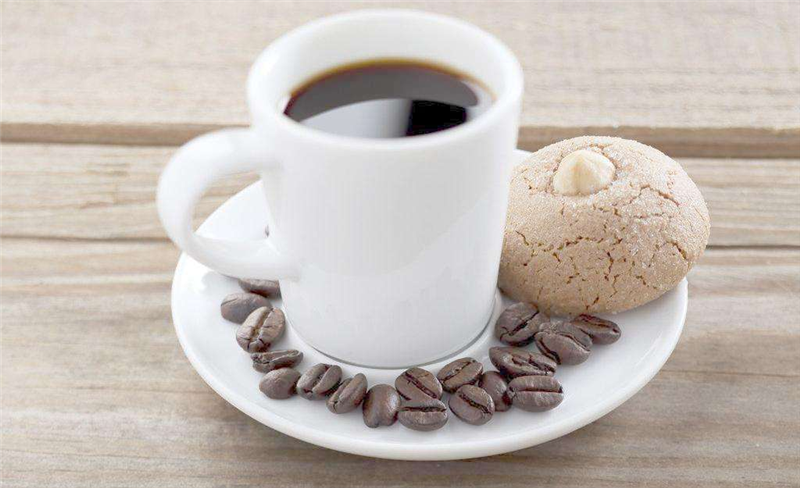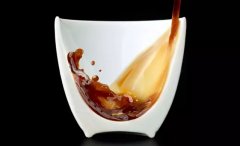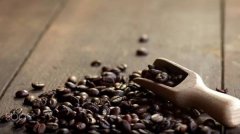What are the brewing steps of Erega Coffee Brand

Professional barista communication, please pay attention to coffee workshop (Weixin Official Accounts cafe_style )
The ripe coffee cherries screened out will then enter the peeling machine to remove the peel and pulp;
Hand-washed yega Shefi. 15g powder, medium fineness grinding (small Fuji ghost tooth knife 3.5 grinding), v60 filter cup, 91-93 ℃ water temperature, the first injection of 30g water volume, 27 seconds stewing, injection to 105g water volume cut off water, wait for the powder bed water volume to drop to half, then slowly inject water until 225g water volume, the tail section does not, water powder ratio 1:15, extraction time 2:00
Then the green coffee beans with the residual pulp pectin enter the fermentation stage (Fermentation with microorganisms in water or microorganisms in the air); After fermentation, the fruit with the endocarp will enter the washing channel to wash clean; After washing clean, it is the drying stage, the drying stage will keep the water content of the coffee beans as much as possible at about 12%, and then put them into sacks to stand for about 2-3 months of green beans rest, in order to make the quality of the green beans more stable, and finally remove the endocarp and sell them!
Ethiopian Yirgacheffe Aricha G1 Washed
Country: Ethiopia Fiscal year: 2003
Grade: G1
Production area: Gediyo
Altitude: 1900-2100 m
Breed: Native species
Produced by Kebel Aricha
Flavor: Sweet orange, cherry, honey sweet
This batch of Yegashefi is produced at the Kebel Aricha processing plant, near about 650-700 small coffee farmers, who send ripe coffee berries here for processing and cash.
About Project Origin
Sasa Sestic, winner of the 2015 World Barista Competition, started a green bean shopping project called Project Origin three years ago with his business team ONA Coffee. The project works directly with coffee farmers in poor countries and regions to improve their production conditions and pay them 20% above fair trade prices.
The project also aims to strengthen the relationship between roasters and coffee farmers and to guide coffee farmers to grow high-quality coffee beans. So far, Sasa has established relationships with coffee growers from eight countries, including Brazil, Panama, India, Ethiopia, El Salvador and Costa Rica.
Flavor description: Sweet orange tones, green berries, peaches, longan, red dates, honey sweet, cocoa with a hint of spice, body thick and lingering finish
According to the different processing methods of coffee beans, Yejia Xuefei is divided into two categories:
Class A is the washing treatment method, the grade standard is formulated by SCAA of "American Fine Coffee Association", which is divided into Gr-1;Gr-2, the smaller the Arabic numeral, the higher the grade, G1 Ye Jia Sherfie style is distinct, citrus flavor and floral flavor are integrated in the coffee liquid, which is delicious that everyone can not resist;
Class B is the sun treatment of coffee beans, grades are divided into, Gr-1;Gr-3;Gr-4;Gr-5, the same highest grade of G1 sun plus sherry fruity, open with freshly roasted G1 sun plus sherry coffee bag can subvert everyone's original understanding of coffee, only to taste the highest grade of sun plus sherry people will believe that coffee is a fruit..
Factory Name: Coffee Workshop Front Street Cafe Address: No. 10 Baoan Front Street, Yuexiu District, Guangzhou City Contact: 020-38364473 Ingredients List: Self-baking Shelf Life: 90 Net Content: 227g Packaging: Bulk Coffee Bean Ripe Degree: Coffee Ripe Bean Sugar: Sugar Free Origin: Ethiopia Roasting Degree: Mild Roasting
Treatment method: washing
Happy coffee growers pluck coffee cherries from trees and pour them into pools filled with water. Because coffee cherries vary in density depending on their maturity, overripe and underripe coffee cherries and some branches float to the surface, while mature coffee cherries sink to the bottom. Naturally, this method was used to select a portion of the coffee cherries that passed the first level.
Important Notice :
前街咖啡 FrontStreet Coffee has moved to new addredd:
FrontStreet Coffee Address: 315,Donghua East Road,GuangZhou
Tel:020 38364473
- Prev

How about Yega Xuefei washing Ariga Coffee beans? which brand of Yega Coffee is better?
For professional baristas, please follow the coffee workshop (Wechat official account cafe_style), and then the raw coffee beans with residual pectin will enter the fermentation stage (fermentation with microorganisms in water or air); after fermentation, the fruit with endocarp will enter the flushing channel to wash clean; after washing clean, it will be the drying stage, and the drying stage will be
- Next

Yega Xuefei Water washing Eriga Coffee producing area introduces how to brew Yega Xuefei coffee.
Professional barista communication, please pay attention to the coffee workshop (Wechat official account cafe_style) treatment: happy coffee farmers will first pick the coffee cherries from the trees, and then pour them into the pool filled with water, due to the different density caused by the maturity of coffee cherries, overripe and immature coffee cherries and some branches and leaves will float on the surface, and enough
Related
- Detailed explanation of Jadeite planting Land in Panamanian Jadeite Manor introduction to the grading system of Jadeite competitive bidding, Red bid, Green bid and Rose Summer
- Story of Coffee planting in Brenka region of Costa Rica Stonehenge Manor anaerobic heavy honey treatment of flavor mouth
- What's on the barrel of Blue Mountain Coffee beans?
- Can American coffee also pull flowers? How to use hot American style to pull out a good-looking pattern?
- Can you make a cold extract with coffee beans? What is the right proportion for cold-extracted coffee formula?
- Indonesian PWN Gold Mandrine Coffee Origin Features Flavor How to Chong? Mandolin coffee is American.
- A brief introduction to the flavor characteristics of Brazilian yellow bourbon coffee beans
- What is the effect of different water quality on the flavor of cold-extracted coffee? What kind of water is best for brewing coffee?
- Why do you think of Rose Summer whenever you mention Panamanian coffee?
- Introduction to the characteristics of authentic blue mountain coffee bean producing areas? What is the CIB Coffee Authority in Jamaica?

